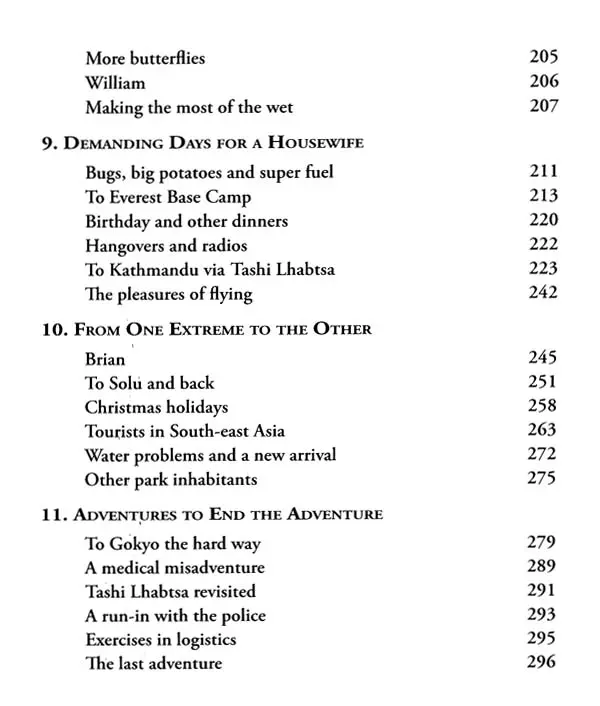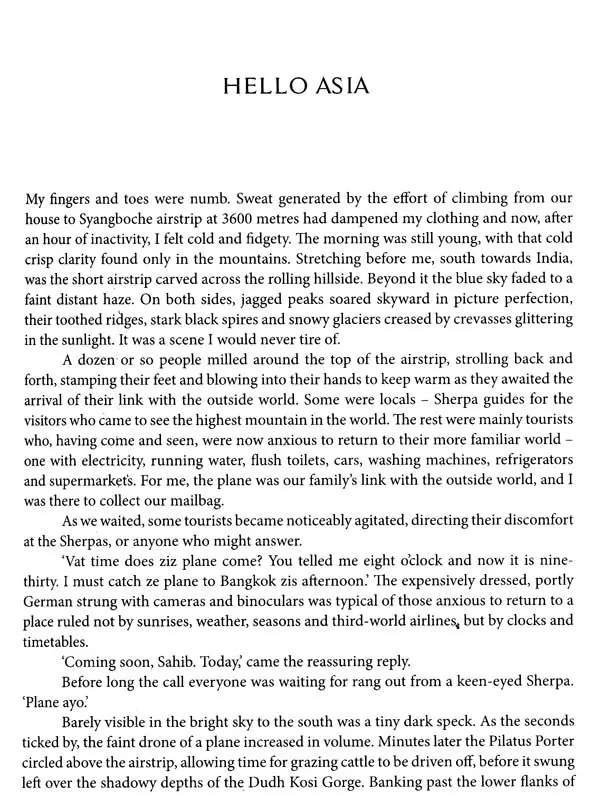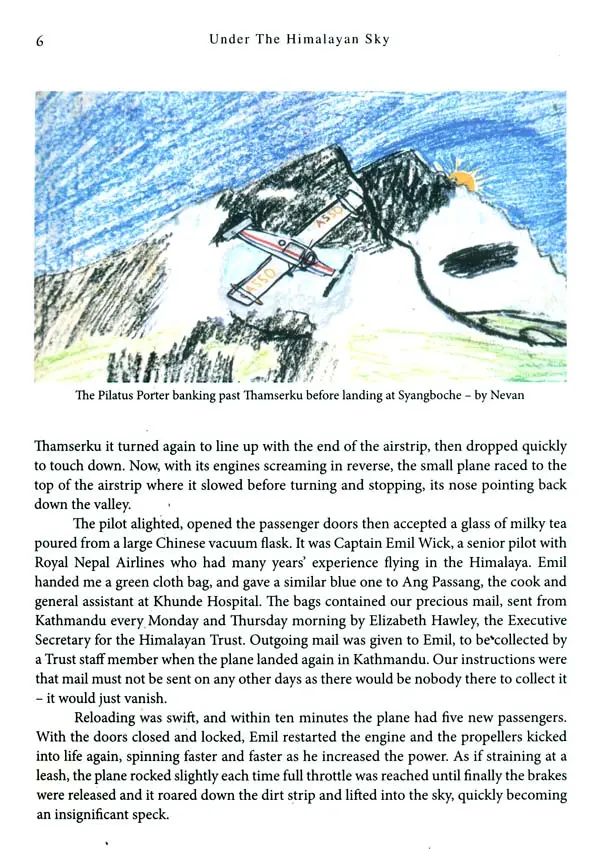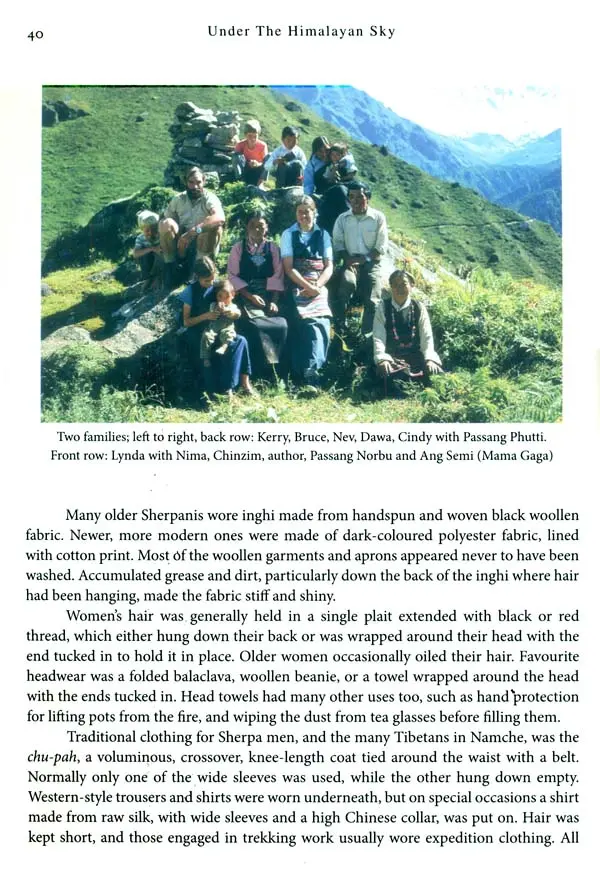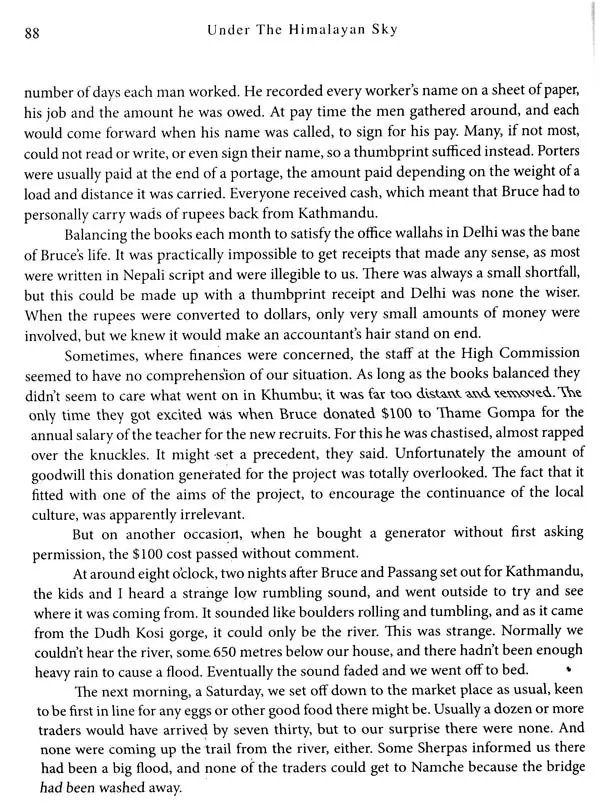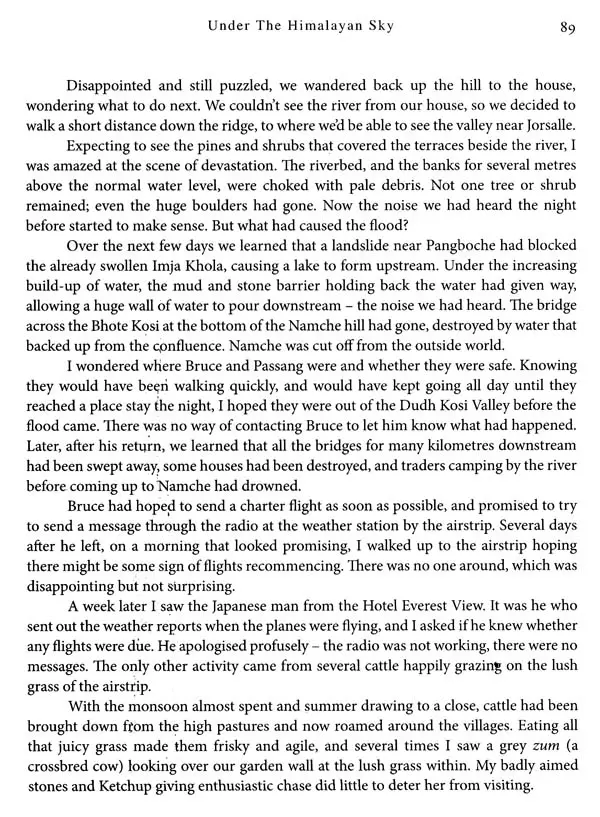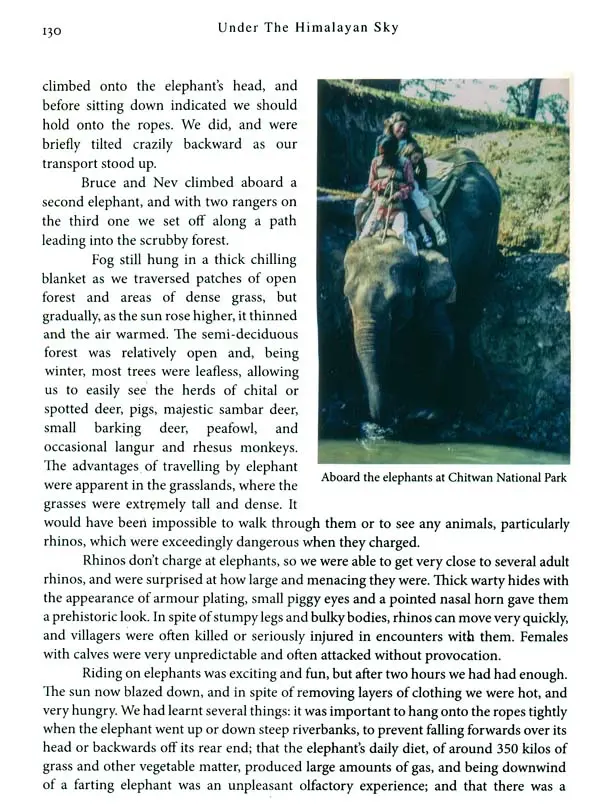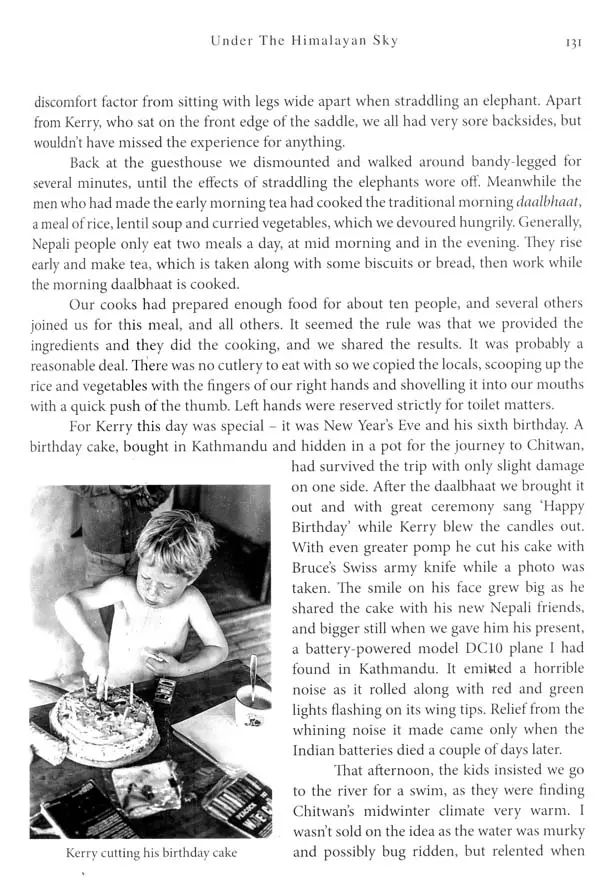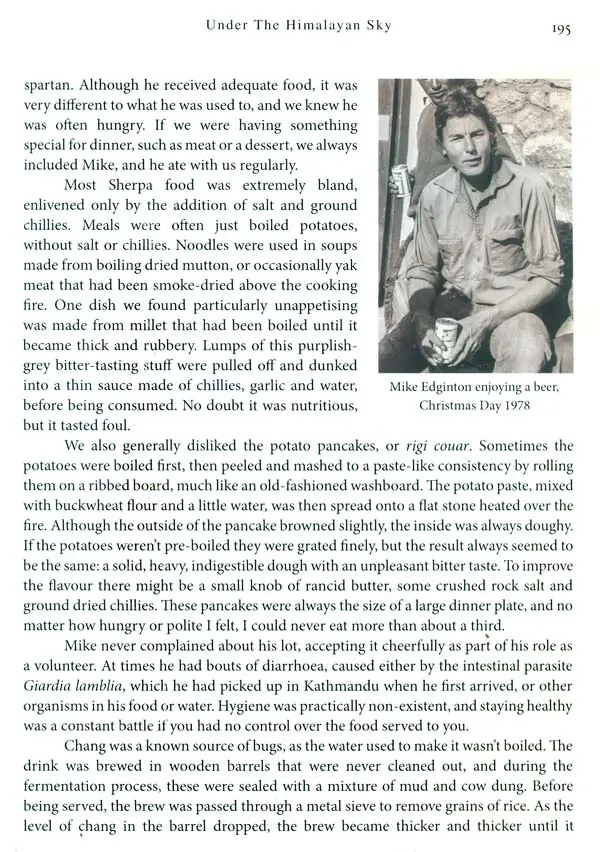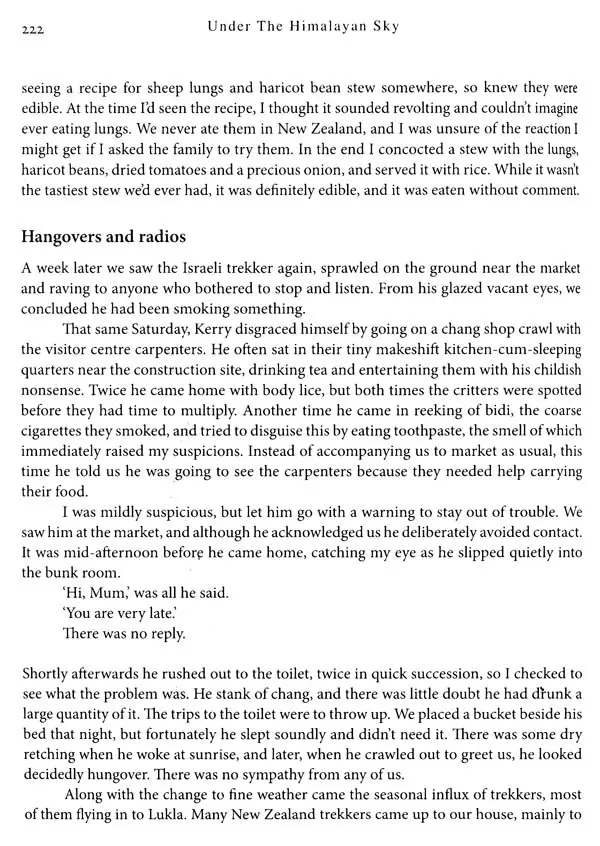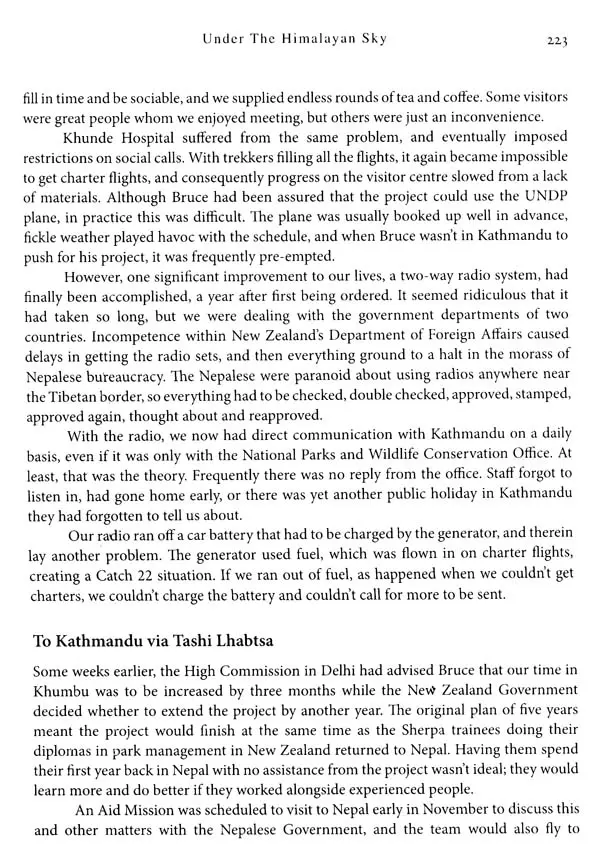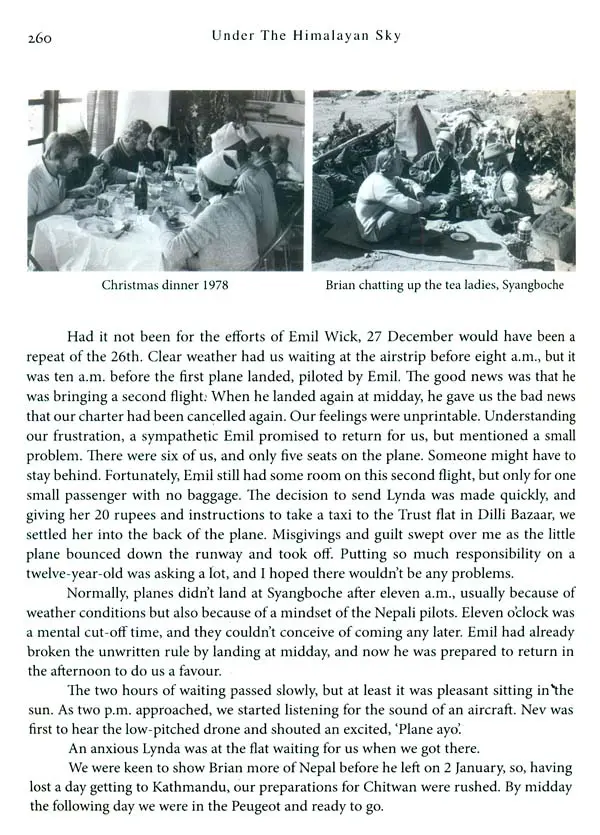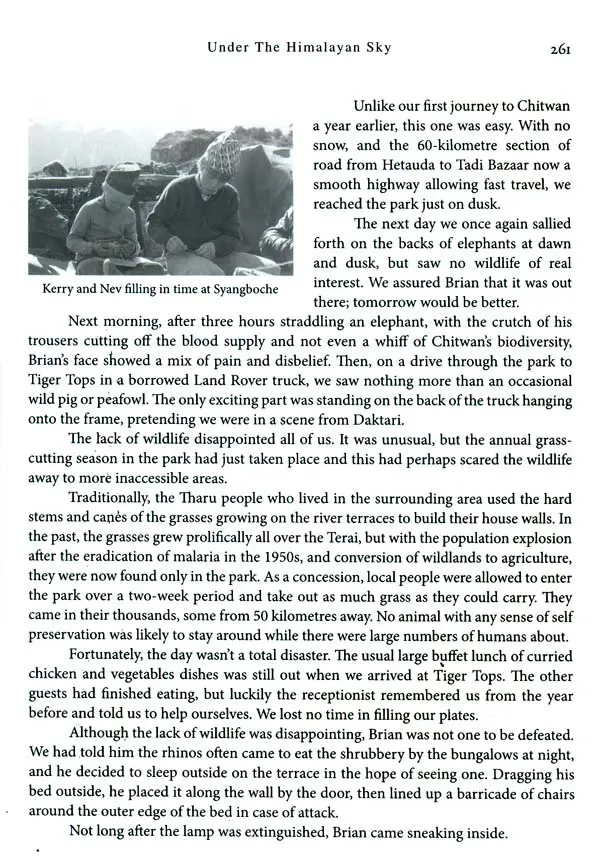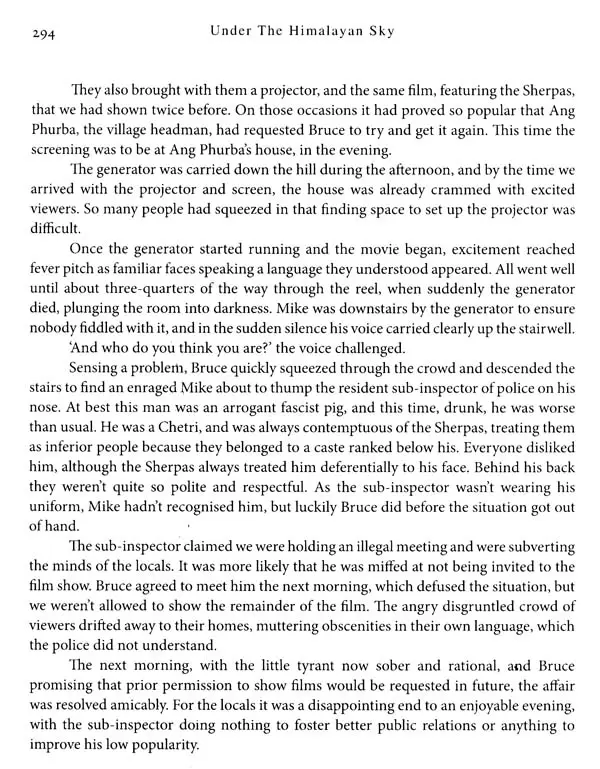
Under The Himalayan Sky- Establishing Sagarmatha National Park (A New Zealand Family's Experience)
Book Specification
| Item Code: | UAG815 |
| Author: | Margaret Jefferies |
| Publisher: | Vajra Books, Nepal |
| Language: | English |
| Edition: | 2016 |
| ISBN: | 9789937623650 |
| Pages: | 312 (Throughout Color and B/w Illustrations) |
| Cover: | PAPERBACK |
| Other Details | 9.50 X 7.00 inch |
| Weight | 920 gm |
Book Description
Under the Himalayan Sky is Margaret's memoir of the time the family spent in Humbug (Mt Everest), with no running water or electricity, largely cut off from the outside world, living on the traditional local diet of potatoes and tea. In spite of what might be perceived as hardships, the family embraced life amongst though colorful and hospitable Sherpa people.
Margaret's story paints a fascinating portrait of Nepal in the early days before large scale tourism opened it up to the outside world.
After living in Khumbu from 1977- 79, Margaret-Jefferies has returned to Nepal and Khumbu many times. This includes living in Kathmandu for 1986-89 while her husband Bruce managed a Nepal-wide Protected Areas Project. She is the author of 'Highest Heritage, a guide to the natural and cultural world of Sagarmatha .National Park, and `royal Chitwan national Park Wildlife Heritage of Nepal. Margaret's home is currently in Wanaka, New Zealand, where she lives with her husband, Bruce, assisting him with his work in conservation,
An early exploratory expedition in the autumn of 1950, by Englishman Bill Tilman and Americans Charles and Oscar Houston, reached the Khumbu Glacier and climbed a high point to view the mountain. The following year, a reconnaissance expedition led by British mountaineer Eric Shipton, pioneered a route through the Khumbu icefall to the upper basin known as the Western Cwm. In 1952 the Swiss made two attempts to reach the summit, using the new route through the icefall and Western Cwm to reach the South Col. On their first attempt, in spring, Raymond Lambert and Sherpa Tenzing Norgay reached 8597 metres before turning back. On their second attempt, in November, they reached 8102 metres before being forced to retreat by the bitterly cold weather.
The British returned in 1953, and on 29 May, two of their team succeeded in reaching the summit. They were New Zealander Edmund Hillary and Sherpa Tenzing Norgay, and their achievement was celebrated around the world. Hillary was knighted by the British Government for his efforts, as was John Hunt, the leader of the expedition. Tenzing Norgay received a medal.
With the highest point on Earth conquered, the spotlight fell on Nepal and its majestic mountains, which became a magnet for climbers and adventurous travelers. More expeditions arrived during the 1950s, to climb Everest and other major peaks in the region, and by the early 1960s there had been several first ascents of other more minor peaks, mainly by New Zealanders. All these expeditions were assisted by Sherpas, the local people of the Khumbu region of Nepal, who transported the expedition food and gear to high-altitude camps.
Being traders by tradition, the hardy Sherpas were skilled entrepreneurs who used their yaks to move goods through the high Himalaya. And they were charismatic, with ready smiles and welcoming hospitality. Yet in Western eyes they were an impoverished people who worked extremely hard to survive in their harsh high-altitude environment. They had many health issues and no education, yet they were willing to help. This was not lost on Edmund Hillary, who realized that without the Sherpas he might not have reached the summit of Everest.
To help the Sherpa people, Hillary began raising funds to build schools and hospitals, and provide other facilities requested by their communities. The Himalayan Trust was set up to administer funds, and Hillary's legacy has been far-reaching and successful in improving the Sherpas' lives.
Events taking place outside Nepal around the same time were also impacting on the Sherpas' lives and homeland. During the late 1950s and early 1960s, large numbers of Tibetans poured over the borders into Nepal and India, escaping the political turmoil caused by the Chinese takeover of Tibet. Many came to Khumbu via the Nampa Lane, a 5700-metre pass on the old trading route, bringing their cattle and sheep with them. The sudden influx of grazing animals, had a deleterious effect on the rangelands, seriously depleting the forage available, with the result that both immigrant animals and Sherpa stock died of malnutrition.
Increasing numbers of trekking and mountaineering groups visiting the Khumbu during the 1960s also put a strain on the environment. While the number of visitors was not particularly high, most were, supported by large crews of porters, cooks and helpers, all of whom used firewood for cooking and warmth. Sherpa households also started hosting travelers, further increasing the demand for firewood. By the end of the decade, both Nepalese and westerners 'were expressing concern at the deterioration of the environment, and it was felt that the area needed some form of protection. Sir Edmund Hillary and others suggested that the Khumbu Region be made a national park, prompting several studies commissioned by the Nepalese Government. These studies all endorsed the idea, and on 5 October 1973, at the World Congress of the World Wildlife Fund held in Bonn, HRH Prince Gyanendra of Nepal announced the decision in principle to establish a national park.
An approach was subsequently made to the New Zealand Government to help establish the new park. New Zealand was seen as having experience in the management of national parks in alpine areas, and also, most importantly, was not involved politically in the wider region. New Zealand officials carried out an appraisal of the proposed area in 1974, and in 1975, through a Nepal/New Zealand bi-lateral agreement, the project to establish the park commenced. New Zealanders would work in the park for five years alongside Nepalese counterparts, providing amenities, advice and guidelines on park management. The project also included practical training and study in New Zealand for Sherpas, to enable them to help manage Nepal's protected areas on their return.
Book's Contents and Sample Pages



